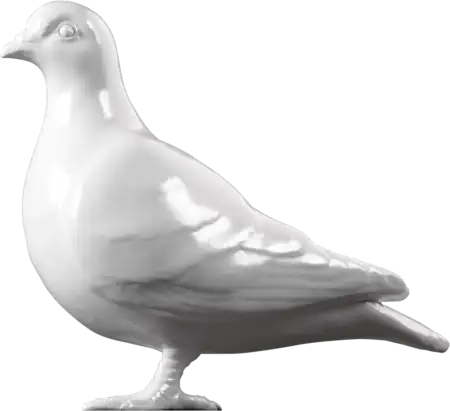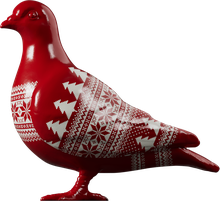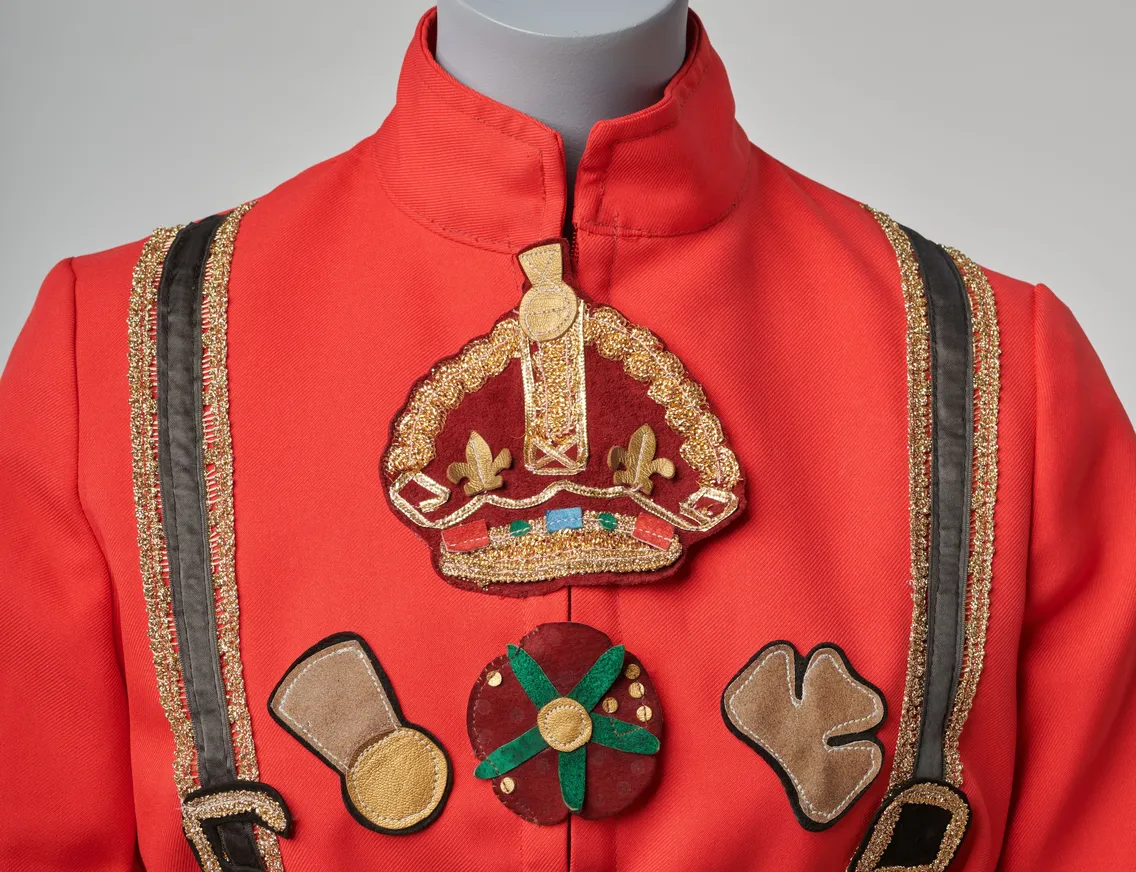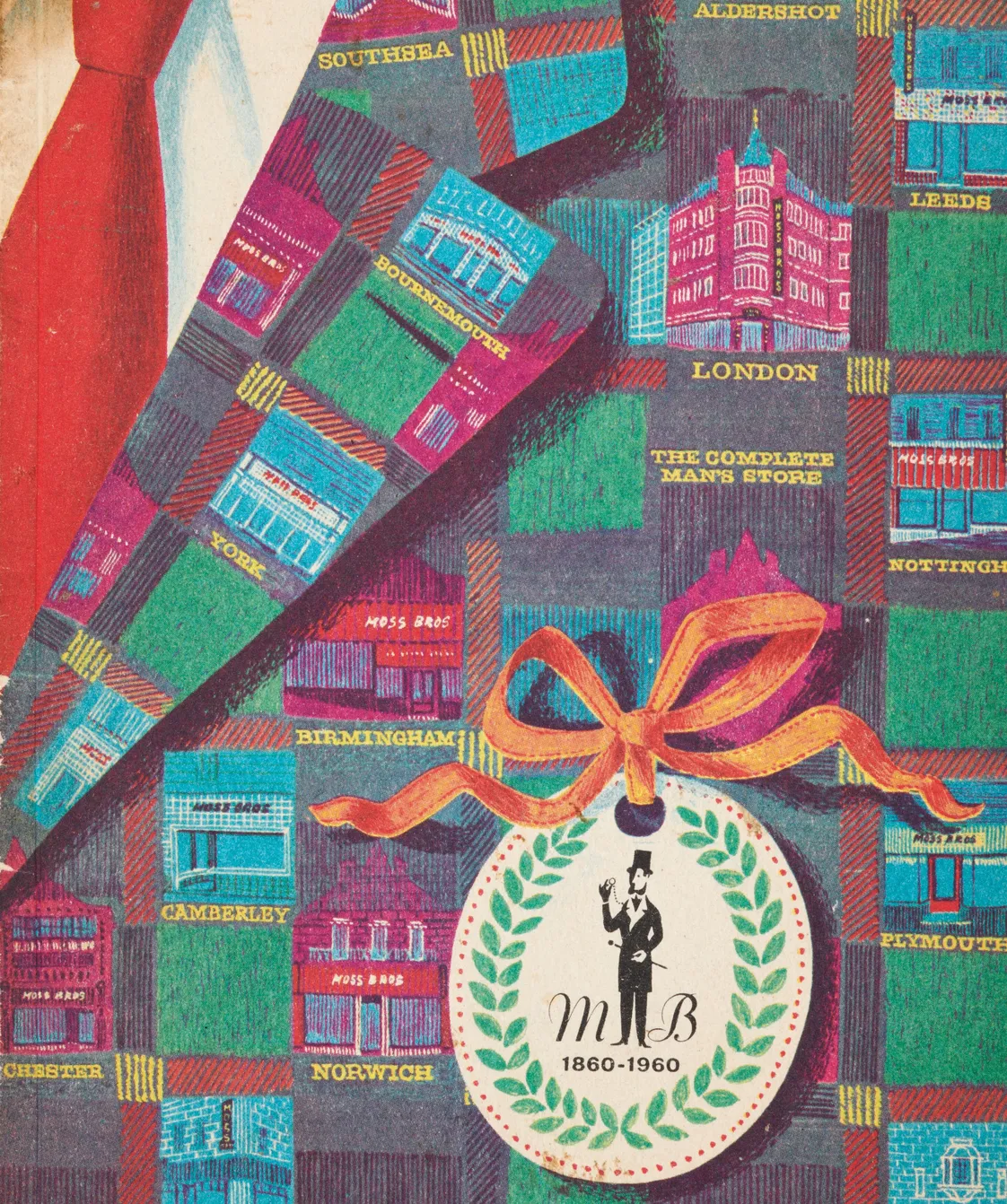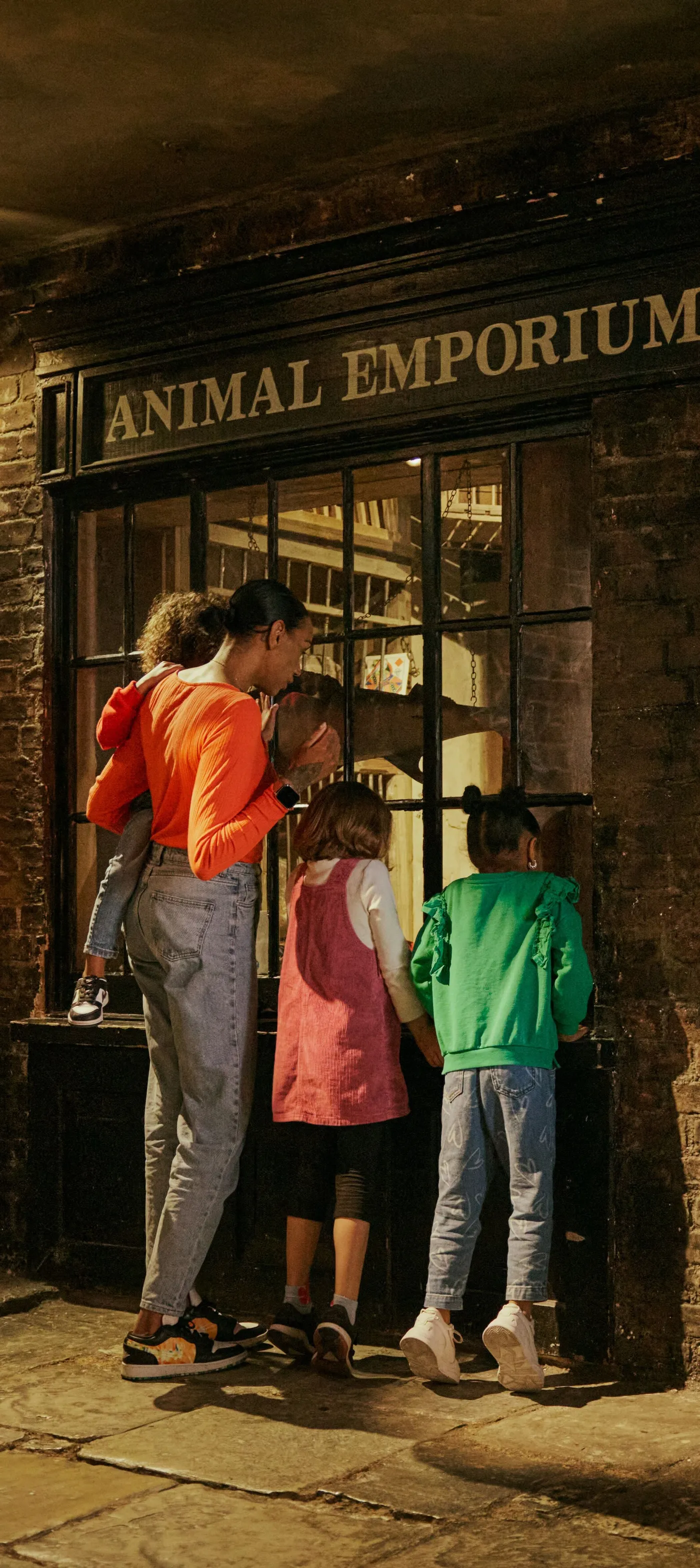22 June 2022 — By Beatrice Behlen
The mystery of the female Beefeater dress
The museum has a mysterious Beefeater dress made by ‘Designer of the Stars’ Colin Wild. We don’t know who would have worn this dress, but the stitching and design give us some idea.
Yeomen Warders, or Beefeaters to you and me, have long been emblems of London and — like red telephone and mail boxes — are often used to promote the capital to visitors. This was one of the reasons why, at an auction in June 2021, the museum chose to acquire a dress made the intriguing Colin Wild (reason #2), inspired by the Beefeaters’ red and gold state uniform. The third reason relates to a mystery: who wore this outfit and on what occasion is so far unknown.
But first, who are the Yeoman Warders?
Guarding the monarch

A Beefeater figurine, which was part of a 3D model made for the 1951 Festival of Britain.
Originally travelling with the monarch as body guards, Yeomen Warders began to protect The Tower of London in the 16th century. These days, their role is primarily ceremonial and involves greeting and guiding visitors. ‘Beefeaters’, a term often used for the English in general in the past, seems to have been attached to Yeoman Warders at least since the 17th century.
Today, applicants for the role must have served at least 22 years in the armed forces and must have reached a certain rank. This made it difficult for women to apply – until relatively recently! At the time of writing this article, there have only been two female Yeo(wo)man Warders: the first was appointed in 2007, the second in 2017. (Update: Several others have joined their ranks since.)

A photo of Beefeaters at the Tower of London, probably from the 1950s.
Yeomen Warders have two uniforms: a blue and red ‘everyday’ version and the red and gold ‘Tudor State Dress’. Both bear the initials of the monarch – currently ER for Elizabeth Regina – and a crown, but only the state dress is further adorned with a thistle, rose and shamrock the ‘plant badges’ for Scotland, England and Ireland (yes – the Welsh leek is missing).
So what do the Yeoman Warders have to do with Colin Wild?
Who was Colin Wild?
From the label of our dress we know that it was produced by “Colin Wild (Clothiers) Ltd”, in Newburgh Street in central London. This runs parallel to Carnaby Street, one of the hippest place to buy clothes in the 1960s, particularly if you were a mod!
Our initial, sketchy biography of Colin Wild patched together from contemporary newspaper accounts was recently augmented by his son Mark, who worked with his father for a short while in the 1970s.
Colin was born in 1937 in Oldham near Manchester, moved to London after attending art school, probably around the early 1960s, and worked as a window dresser before opening a shop, the Carnaby Cavern, with Danney Benjamin at 6 Ganton Street. This is where a fabulous pair of trousers held at the V&A might have been made.
Colin Wild was tall (he stood 6 ft 2 in in his elevated shoes), had a shock of red hair and being a flamboyant dresser and great dancer, he was always a welcome member of the crowd on Top of the Pops. He understood the needs of the musicians, entertainers and dancers who came to him for custom-made performance-wear.
Wild’s reputation grew quickly, and he made clothes for some of the biggest names in show business, including Cliff Richard, Boney M, Alvin Stardust, Shirley Bassey, Marc Bolan, Diana Ross, Bonnie Tyler, Suzi Quatro and ABC’s Martin Fry, as well as providing costumes for variety shows, and – yes – Miss World contests.

Colin Wild during a fitting of the Flirtations band members at his shop in 1976.
“Colin Wild's motto was 'You Name It – We Make It'”
In the mid-1970s, Wild’s partnership with Benjamin ended and he opened his own shop across the road from the Carnaby Cavern, which by then had moved to Newburgh Street, taunting his old partner with a life-size cut-out of himself that hung out of a window over the street. His motto was “You Name It – We Make It”, and according to an advert from 1984 he supplied “dresses, leotards, catsuits, hand-made suits, capes, trousers, waist-coats, space outfits, or period costumes, drag outfits or striptease all circus outfits”.
Following an accident in 1986, Wild initially continued to work from home, before retiring to Cornwall in the spring of 1988. A week later he died of a heart attack.
Whom did the Beefeater dress belong to?
Taking a closer look at the make of the dress
Wild was known for the speed with which he could design a garment and have it made, just in time for a performance. Some of the machine stitching on our dress seems to indicate that it might also have been produced in haste. Whoever made the black panel with gold embroidery just underneath the “plant badges”, did not understand that on the Yeoman Warders uniform this is meant to represent the stems and leaves of the thistle, shamrock and rose.
The materials used are far from luxurious: the scarlet fabric is made of polyester, the gold braid is more lurex than metal, and the central motifs are held down with Velcro on one side, rather than hooks and eyes. This allows the central zip to be opened and closed but might also suggest the need for getting in and out of the costume quickly.
We originally assumed our new acquisition to be a ‘way out’ 1960s frock, maybe worn to a fancy dress party. The way it is put together, however, indicates that it was not created for close inspection but for making an impact from afar. Moreover, Wild’s professional biography suggests our Beefeater dress might have been produced for the stage, or maybe a TV appearance – close-ups not allowed.
If you have any idea who might have worn our dress, please get in touch. We would also love to hear from you, if you knew Colin Wild, ever visited his shop or had something made by him.
Beatrice Behlen is Senior Curator, Fashion and Decorative Arts at London Museum.
